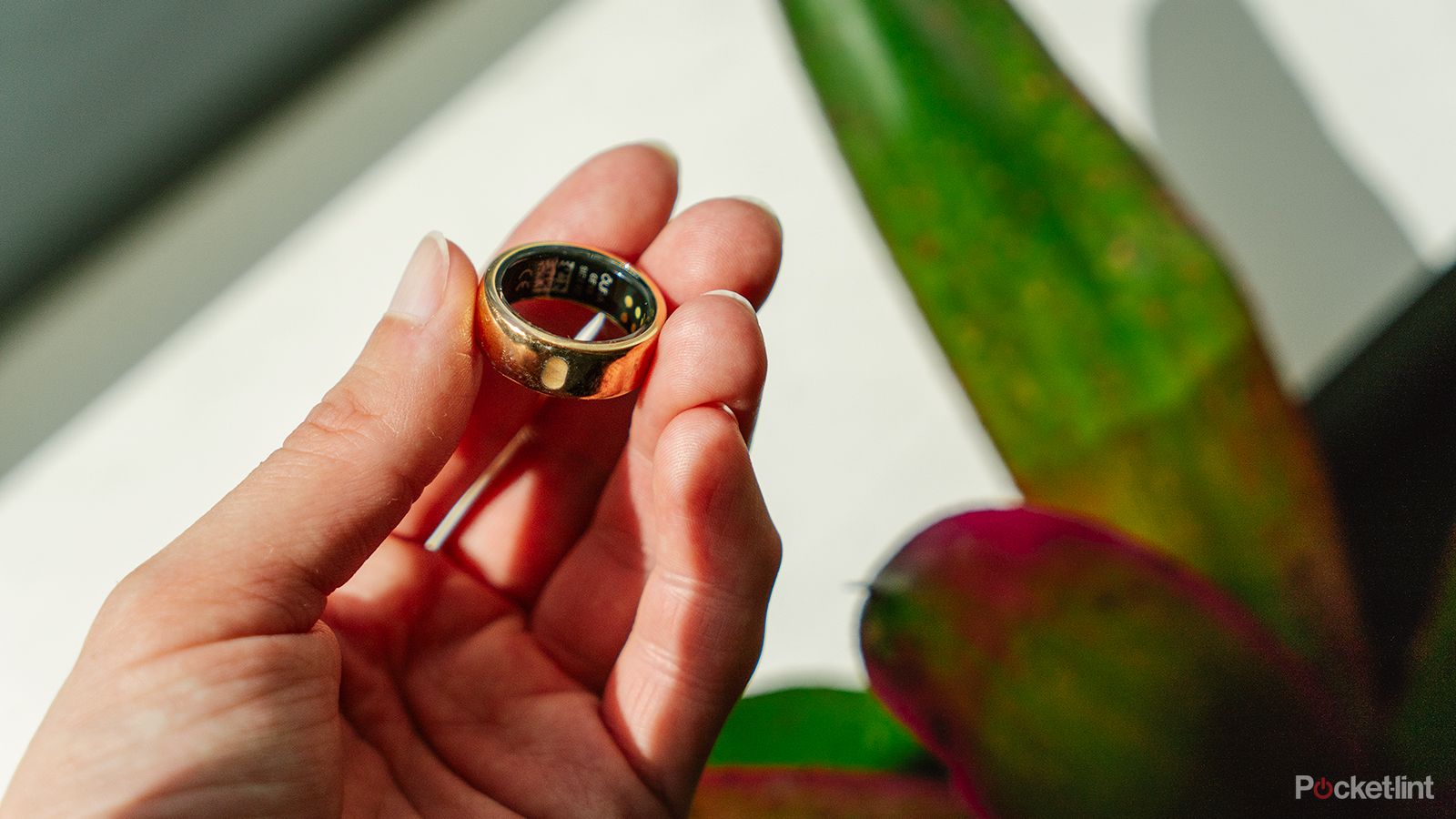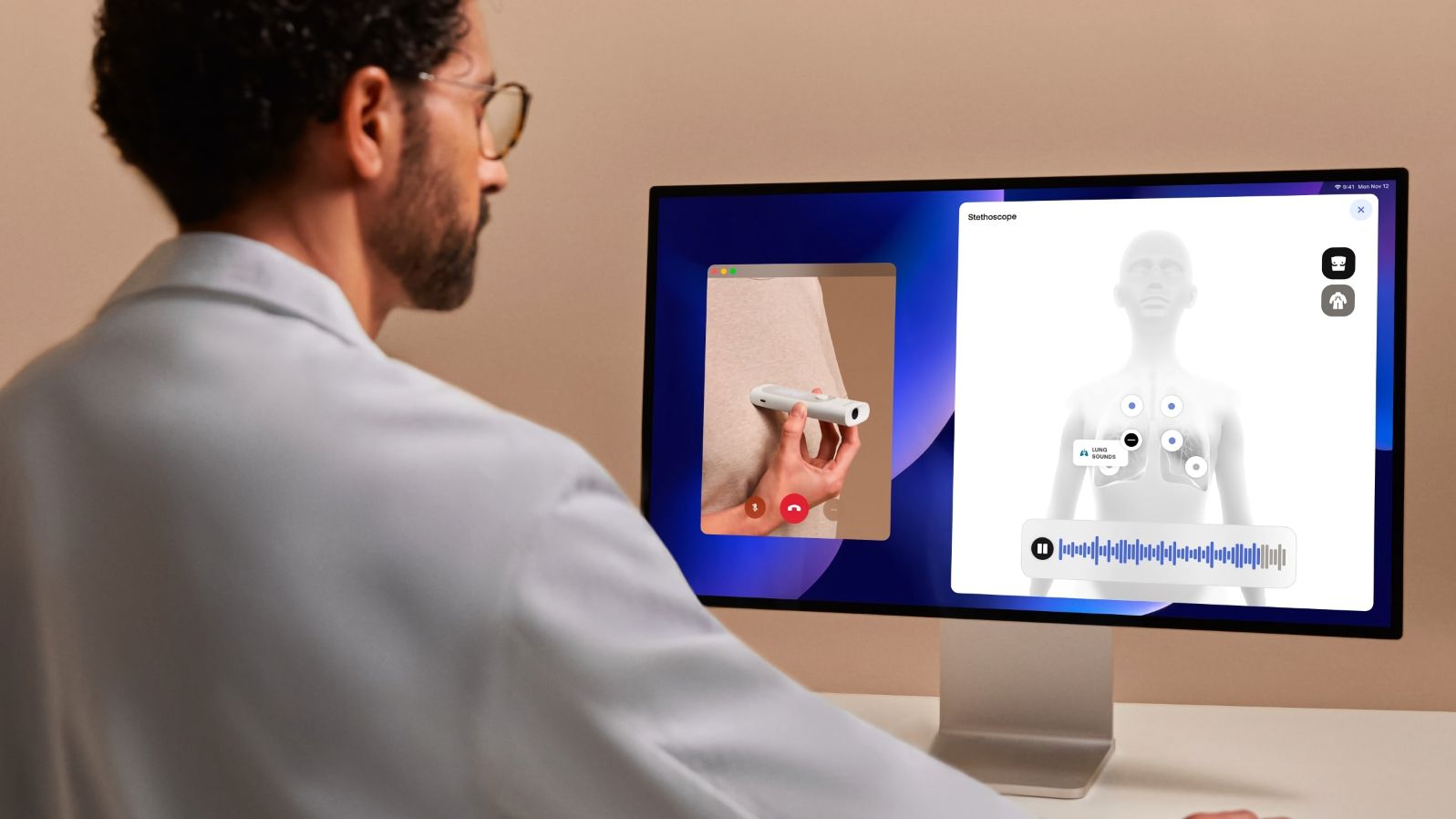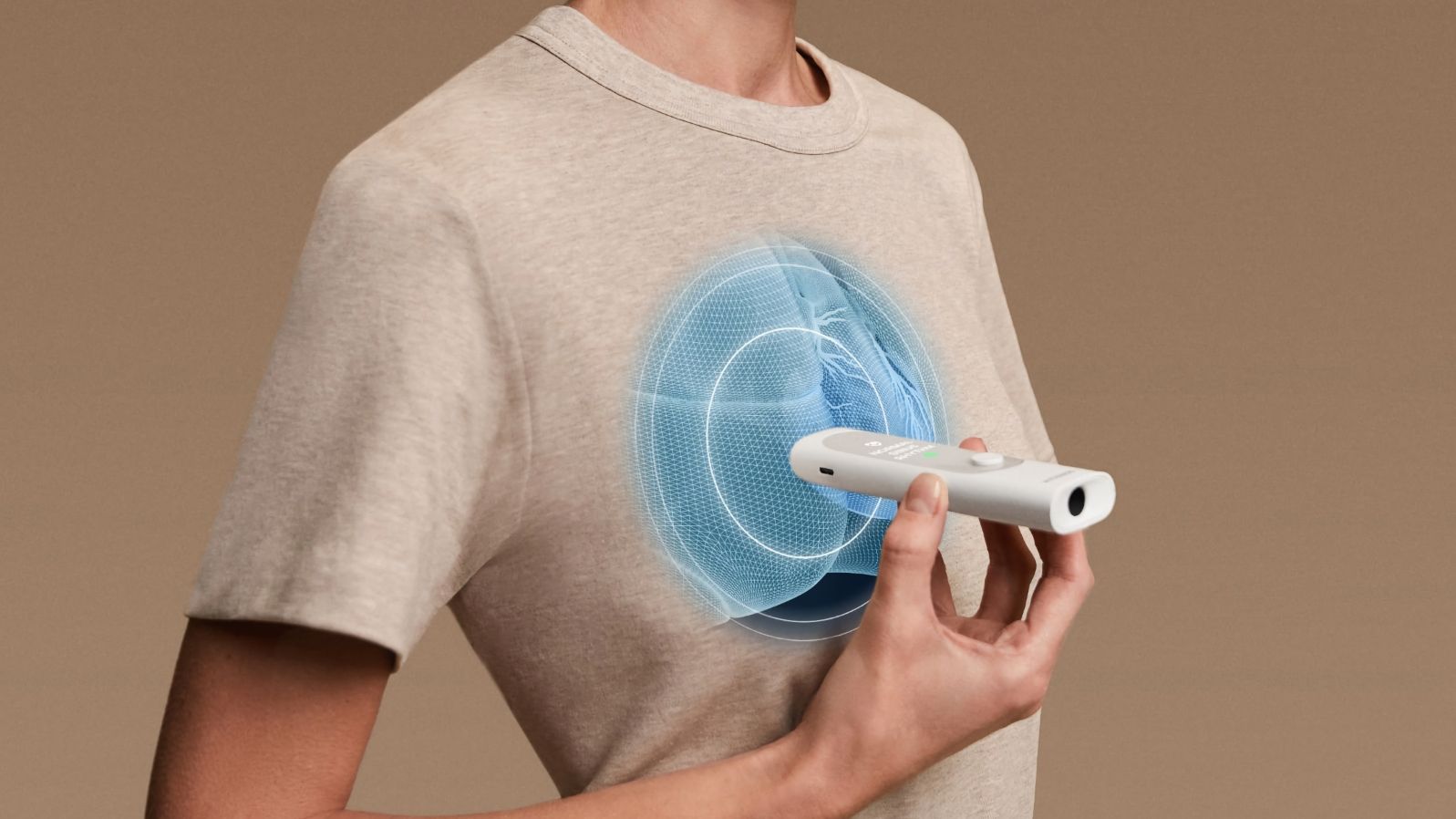Key Takeaways
- Withings’ new device, BeamO, is a handheld “multiscope” that combines sensors to take accurate health readings without being worn on the body.
- It can measure body temperature, heart health, lung health, and blood-oxygen levels, and sync the data to an app.
- BeamO is aimed at families and can store medical information for up to eight separate people; it is currently awaiting FDA approval and set to launch in June 2024.
It can often feel like we take what wearables make possible for granted. It’s no small task to pack enough sensors to track your heart health, blood-oxygen levels, and body temperature into something compact and stylish enough to fit on your wrist, let alone a finger.
And the benefits of those breakthroughs, both in terms of utility and hardware sales, are clearly novel enough to fight over. Apple’s current legal tussle with medical device maker Masimo over how the Apple Watch measures your blood-oxygen levels is an excellent current example.
But even if a watch can know so much about you, it doesn’t necessarily mean it’s learning those facts in the most accurate way. Experts have concluded that, while useful, there are still too many unknowns that need to be filled in to verify the accuracy of a wearable’s measurements. They put convenience over the demands of medical diagnosis.
Apple Watch ban: Everything you need to know
What Apple’s ITC ban means for current Apple Watch owners, and how we got here.
At CES 2024, Withings, creator of smartwatches, scales, and other health and wellness devices, proposed an alluring alternative. It’s called BeamO, a “multiscope” that puts a bundle of sensors into a handheld device you can use on yourself and your family members, rather than wear on your body, and it might thread the needle on convenience and accuracy wearables have largely missed.
Withings
What does BeamO do?
BeamO looks a bit like a flatter, sleeker version of Withings’ older Thermo, a contact-free thermometer designed to be used just by pointing and swiping it across your forehead. BeamO’s vastly expanded capabilities are the key difference.
Livia Robic, BeamO’s product manager, tells Pocket-lint that the device was primarily designed to “target families,” and be a product that “you can easily use on yourself or others.” The dream, according to Robic, was to replace the thermometer many families already have in their bathroom cabinet, the kind you might have a memory of your mother or grandmother sticking under your tongue, with something that can account for even more aspects of your day-to-day health.
Not just your body temperature, but heart and lung health too, in a device slim enough to fit in your pocket, with the ability to store medical information for eight separate people.
How does BeamO work?
BeamO includes “four sensors for taking four types of measurements,” Robic explains, “and all of these measurements are synced over to your app.” Besides temperature measurements, BeamO includes a medical-grade ECG (electrocardiogram), an oximeter for measuring blood-oxygen levels and checking oxygen saturation, and a digital stethoscope for listening to your heart and lungs.
All of this functionality has existed in separate devices previously, some as wearables that Withings sells like the ScanWatch 2, and others as singular measurement tools like the BPM Core. The difference with BeamO is that it combines them in an all-in-one device, accommodating unique ways of taking each measurement for more accuracy.
For body temperature, that’s a slow swipe across an artery on your forehead. You can measure heart rate and blood oxygen levels by holding two fingers on the sides of the BeamO for several seconds. And listening to heart and lung sounds, BeamO’s most unique skill, includes hands-on instructions that guide you through the process of finding the right spots on your torso.
“If you want to listen to heart or lung sounds, we’ll tell you where to place the BeamO on the device’s screen,” Robic says. “The technology of this stethoscope records mechanical movements into digital sounds via a membrane inside.” In other words, the handheld device acts as a sort of highly sensitive microphone that can pick up different internal sounds depending on where you point it.
“We want to be independent of the software doctor’s use, and instead work in parallel.”
Combined, you can get a fuller picture of your health in the Withings Health Mate app and share it with your doctor. Robic says you can even share a link that can give your general practitioner a live view of your heart rate and other stats while you take a reading without the need for extra software. “We want to be independent of the software doctor’s use, and instead work in parallel,” Robic says. That makes BeamO useful for doctors if you decide to share your information, but still technically a consumer device.

How a team of women turned the Oura Ring into an essential female health tool
Oura is offering unique insights for women to empower and educate them on making decisions about their bodies.

What goes into getting approved by the FDA?
At launch, BeamO is supposed to cost $249, but there’s still some uncertainty whether it hits the June 2024 launch window, because unlike some wearable devices, Withings is trying to get FDA clearance for the BeamO.
The process is complex, and not entirely straightforward, with different requirements for getting FDA approval in the United States versus a CE mark in Europe, Robic says. “We submit usability tests and have different product codes for each sensor” and Withings is also able to use previous tests it completed to get the Thermo approved as a baseline for the body temperature measurements BeamO is able to take.
Building a product around government approval almost always takes longer than it would if you branded it as purely a wellness device. Withings U-Scan, a smart urinalysis device meant to live in your toilet, still hasn’t gone up for sale because of its ongoing approval process. When I asked if BeamO could be sold with features disabled prior to FDA approval, Robic said it was possible but “if you don’t want to sell a white box, you have to get these features approved.” The appeal of BeamO are the “medical-grade” measurements that it’s able to take; so having some patience for bureaucracy is a virtue in Withings’ book.
“If you don’t want to sell a white box, you have to get these features approved.”
While certainly not as eye-catching as a piece of smart jewelry or a fancy watch, there’s a charm to the BeamO forward-looking features, and room for growth. Robic says there’s real potential in combining the measurements the launch version of BeamO is able to take in new ways to learn even more about your current health. That’s similar to the way devices like the Oura Ring have deployed a slow drip of new software features based on data from the same sensors.
Much as the thermometer became a household tool because of how temperature could tie together symptoms like a fever to a runny nose, BeamO’s role as a replacement for the thermometer should be able to do even more, whether just at home or for a remote doctor’s visit down the road. It’s not always-on or an accessory, but it could prove to be even more useful than the smartwatch you’re already wearing.
The BeamO will cost $249.95 and is currently scheduled to be released in June 2024.
Trending Products

Cooler Master MasterBox Q300L Micro-ATX Tower with Magnetic Design Dust Filter, Transparent Acrylic Side Panel…

ASUS TUF Gaming GT301 ZAKU II Edition ATX mid-Tower Compact case with Tempered Glass Side Panel, Honeycomb Front Panel…

ASUS TUF Gaming GT501 Mid-Tower Computer Case for up to EATX Motherboards with USB 3.0 Front Panel Cases GT501/GRY/WITH…

be quiet! Pure Base 500DX Black, Mid Tower ATX case, ARGB, 3 pre-installed Pure Wings 2, BGW37, tempered glass window

ASUS ROG Strix Helios GX601 White Edition RGB Mid-Tower Computer Case for ATX/EATX Motherboards with tempered glass…











